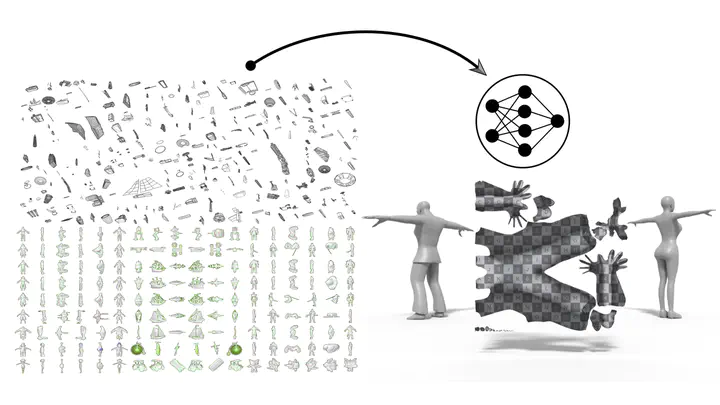 Image credit: Unsplash
Image credit: Unsplash
Abstract
One embodiment of the present application sets forth a computer-implemented method for generating a set of seam predictions for a three-dimensional (3D) model. The method includes generating, based on the 3D model, one or more representations of the 3D model as inputs for one or more trained machine learning models; generating a set of seam predictions associated with the 3D model by applying the one or more trained machine learning models to the one or more representations of the 3D model, wherein each seam prediction included in the set of seam predictions identifies a different seam along which the 3D model can be cut; and placing one or more seams on the 3D model based on the set of seam predictions. At least one advantage of the disclosed techniques compared to prior approaches is that, unlike prior approaches, the computer system automatically generates seams for a 3D model that account for semantic boundaries and seam location while minimizing distortion and reducing the number of pieces required to preserve the semantic boundaries. In addition, the use of trained machine learning models allows the computer system to generate seams based on learned best practices, i.e. based on unobservable criteria extracted during the machine learning model training process.
Supplementary notes can be added here, including code, math, and images.